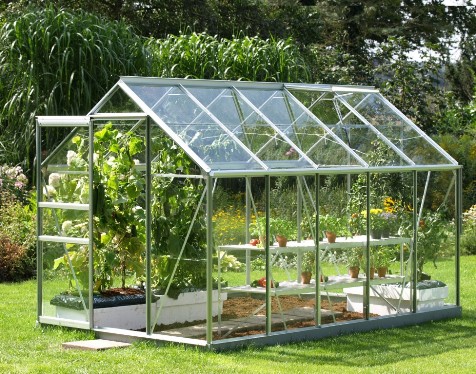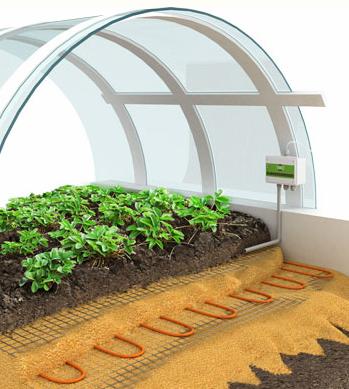Categories: How does it work
Number of views: 4198
Comments on the article: 0
Ground heating systems - how they are arranged and work
Large green lawns, winter gardens, outdoor tennis courts and golf courts, soccer fields, hotbeds, greenhouses and greenhouses, beds with seedlings, flower beds - cable heating systems for the soil can be useful everywhere.
These systems allow you to use the soil as efficiently as possible to achieve several important goals, the main of which is to provide plants with the most favorable conditions for growth, regardless of the climate variability of your region.

A comfortable temperature in the basal and in the aboveground zone of plants creates an atmosphere of the most effective natural development even during periods of cold weather. As a result, productivity, fruitfulness, for example of greenhouses, increases: the soil composition changes due to the successful course of biological processes in it, as a result - plant vegetation accelerates - productivity increases. In such favorable conditions, it is possible to grow tropical plants in cold regions, extend the harvest period, germinate seeds, and simply accelerate the growth of many crops.
The temperature in different zones of the heated soil can be different, because it is set individually for each group of plants. As a result of this approach, heat consumption is extremely suitable both for greenhouses and hotbeds of small size, and for large areas, for example, for a huge football field, where even in winter you can maintain the temperature of the lawn in the region of + 15 ° C, thereby the owner will be able to keep the lawn in in good shape, extend its natural vitality. At the same time, economical cables will be constantly fully waterproof and electrically safe.

Before mounting heating cable, they prepare the soil itself, having previously determined where the remote sensors for soil temperature will be located in it, and where the thermostat will be installed.
Acquire a temperature regulator (or several) of suitable power, install it together with RCD in the control cabinet, the cable heating system is connected to the control cabinet, protecting the wires with a corrugated pipe. It is important that the thermostat is as protected as possible from moisture.
The cable is laid in one of two options: between two grids or just below the grid, to reinforce, to set a fixed shape of the system, as well as to protect the cable from damage by shovels and other conventional tools for working with the ground.
As a kind of thermal buffer, sand is used under which heat-reflecting material is placed (for example, isolon or foamed polystyrene) to retain heat in the working area.

Initially, proceeding with the installation of the system, they remove about 40 cm of soil, lay a layer of isolon, fill it with 5 cm of sand, pour sand with water, compact it, lay the heating cable with a snake according to a pre-developed heating scheme, with a distance of 15 cm for bending, making sure that so that there are no unnecessary extra bends and intersections of cable parts with each other. Of course, they monitor the absence of cable damage, and so that the cable does not move where it is not needed.
Then they lay the net, fasten the cable to the net with screeds, finally lay the main layer - fertile soil. After connecting the wires to the control cabinet, the system is tested. If we are talking about a heating system for the garden, then between the beds, the cable can not be laid at all.

The recommended temperature for the greenhouse is from + 15 ° C to + 25 ° C in the root part of plants. For flower beds, beds, lawns, the characteristic temperature can reach + 30 ° C.The optimal power of the system is from 70 to 100 watts per square meter, while the power of the heating cable itself is maximum 20 W / m in length, but usually it is slightly less.
Subject to the recommended parameters, your system will serve for a long time and properly, the roots of the plants will not be overheated. One way or another, when calculating the system, it is better to use the advice of a professional.
See also at i.electricianexp.com
:
